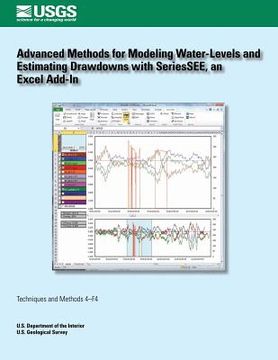Share
Advanced Methods for Modeling Water- Levels and Estimating Drawdowns with SeriesSEE, an Excel Add-In
C. Amanda Garcia
(Author)
·
Joe Fenelon
(Author)
·
Benjamin Mirus
(Author)
·
Createspace Independent Publishing Platform
· Paperback
Advanced Methods for Modeling Water- Levels and Estimating Drawdowns with SeriesSEE, an Excel Add-In - Amanda Garcia, C. ; Fenelon, Joe ; Mirus, Benjamin
Out of Stock
We'll email you when the book is available again
Synopsis "Advanced Methods for Modeling Water- Levels and Estimating Drawdowns with SeriesSEE, an Excel Add-In"
Water-level modeling is used for multiple-well aquifer tests to reliably differentiate pumping responses from natural water-level changes in wells, or "environmental fluctuations." Synthetic water levels are created during water-level mod- eling and represent the summation of multiple component fluctuations, including those caused by environmental forcing and pumping. Pumping signals are modeled by transforming step-wise pumping records into water-level changes by using superimposed Theis functions. Water-levels can be modeled robustly with this Theis-transform approach because envi- ronmental fluctuations and pumping signals are simulated simultaneously. Water-level modeling with Theis transforms has been implemented in the program SeriesSEE, which is a Microsoft(R) Excel add-in. Moving average, Theis, pneumatic- lag, and gamma functions transform time series of measured values into water-level model components in SeriesSEE. Earth tides and step transforms are additional computed water-level model components. Water-level models are calibrated by mini- mizing a sum-of-squares objective function where singular value decomposition and Tikhonov regularization stabilize results. Drawdown estimates from a water-level model are the summation of all Theis transforms minus residual differences between synthetic and measured water levels. The accuracy of drawdown estimates is limited primarily by noise in the data sets, not the Theis-transform approach. Drawdowns much smaller than environmental fluctuations have been detected across major fault structures, at distances of more than 1 mile from the pumping well, and with limited pre-pumping and recovery data at sites across the United States. In addition to water-level modeling, utilities exist in SeriesSEE for viewing, cleaning, manipulating, and analyzing time-series data.

